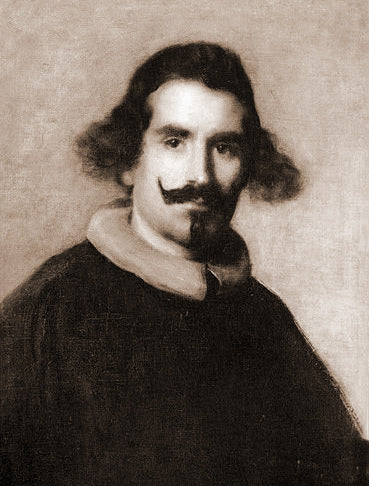
The Coronation of the Virgin, Velázquez
- Oil on linen canvas
- 100% hand-painted
- Reproduction painting
- Available for online purchase
- See quality
- Shipping to the US
- Money-back guarantee
- Customer reviews
| Author: | Diego Velázquez |
|---|---|
| Original Title: | La coronación de la Virgen |
| Type: | Painting |
| Style: | Baroque |
| Medium | Oil |
| Support: | Canvas |
| Year: | 1636 |
| Genre: | Religious paintings |
| Located: | Prado National Museum, Madrid. |
The work stands out for its mastery of golden tones and the luminous contrasts that structure the celestial space. Velázquez achieves a sense of depth through balanced chiaroscuro, where the glows of the sky interact with the warm hues of the garments. The handling of the pictorial material, with loose yet precise brushstrokes, gives the composition an almost ethereal vibration. The ascending arrangement of the figures reinforces the idea of spiritual elevation and symbolizes the passage from the earthly to the divine—one of the most complex and refined themes of his Madrid period.
The painting clearly expresses the centrality of Mary within the structure of the Christian universe, at the meeting point between the human and the divine. This Virgin, with humble features and of Jewish origin, daughter of Joachim and Anne, is the Theotokos: the Mother of God. In her is synthesized the spiritual motherhood of Christianity—mother of Christ and, by extension, of all humanity. At the top, the three persons of the Trinity—Father, Son, and Holy Spirit—crown Mary, who is seated upon the clouds and surrounded by rays of light.
It is considered one of the most significant religious works by Velázquez. The painting was created for the private chapel of Queen Consort Isabel de Borbón, in the Royal Alcázar of Madrid. This context explains the delicacy of the theme and the symbolic depth with which the artist approaches the subject, conceived as an allegory of virtue and divine authority. A connection can be perceived between the figure of Isabel and the central motif of the painting, in which the Virgin Mary assumes a role of spiritual sovereignty, reflecting the queen’s earthly royalty.
Choose options



